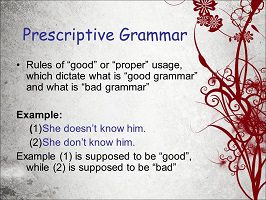Syntax figures Pleonasm anaphora Anacoluto Ellipse and Zeugma
Syntax figures
Also called construction figures , syntax figures are:
- Pleonasm;
- Anaphora;
- Anacoluto;
- Ellipse;
- Zeugma;
- Asyndeton;
- Polysyndeton;
- Anastrophe;
- Hyperbate;
- Synchisis;
- Hipalage;
- Silepsis.
Syntax figures emphasize the syntactic aspect of language, causing changes in the natural structure of the sentence, such as inversion, repetition or omission of terms.
Pleonasm
Pleonasm, also called redundancy, is characterized by the excessive use of words in the transmission of a message, with repetition of ideas.
Example of pleonasm : Dying of dead death.
anaphora
Often used in poetry, the anaphora is characterized by the repetition of one or more words at the beginning of verses, sentences or periods.
Example of anaphora :
You can read.
You know how to write.
You know how to calculate.
Do you know how to think?
Anacoluto
Frequently used in spoken language, the anacoluth causes an interruption in the sentence, anticipating and emphasizing a term that is disconnected from the rest of the sentence.
Example of anacoluth : Diets, how to have the willpower to do them?
Ellipse
Frequently used in spoken language, the ellipsis is characterized by the omission of a sentence term, which is understood, not hindering the understanding of the content of the sentence.
Example of a subject ellipse : It’s decided! Tomorrow I will resign!
Zeugma
The zeugma is characterized by the omission of terms of the previously mentioned prayer, thus not harming the understanding of the message.
Example of zeugma : My daughter studied letters; my son, economics.
Asyndeton
The asyndeton is characterized by the marked absence of connectors and conjunctions that link words and sentences, the most notorious omission being the coordinating conjunction and.
Example of asyndeton : I wanted to see the world, travel to all countries, Greece, Italy, Canada, Mozambique, Australia, expand my horizons.
Polysyndeton
The polysyndeton is characterized by the marked repetition of connectors and conjunctions that link words and sentences, the most notable repetition being that of the coordinating conjunction and.
Polysyndeton example : I wanted to see the world and travel to all countries: Greece and Italy and Canada and Mozambique and Australia and expand my horizons.
anastrophe
Anastrophe, also called inversion, causes a slight inversion of the normal order of words in a sentence, mostly occurring as the anticipation of a term.
Example of anastrophe : I bought gifts for all my nephews.
hyperbate
Hyperbaton causes a sudden inversion of the normal order of words in a sentence, with elements of one phrase interspersed with elements of another phrase.
Example of hyperbate : My children studied math in their room.
Summary
The synchisis provokes a total and violent inversion of the normal order of the words in a sentence, compromising the understanding of the message, which is deconstructed.
Example of summary : The test she studied for she tried yesterday.
Hipalage
Hipalage refers to the attribution of a characteristic of a being or object to another being or object that is related or close.
Example of hipálage : While waiting, I impatiently took notes.
silepsis
In silepsis, there is an ideological agreement and not a grammatical agreement, that is, the agreement is established with the idea that is intended to be conveyed or with implied terms and not with the words that make up the sentence.
Example of silepsis : Minas Gerais is enchanting!
Other figures of speech
Figures of speech are stylistic resources used in oral and written language that increase the expressiveness of the message.
In addition to figures of syntax, figures of speech can also be classified into figures of words, figures of thought and figures of sound.

